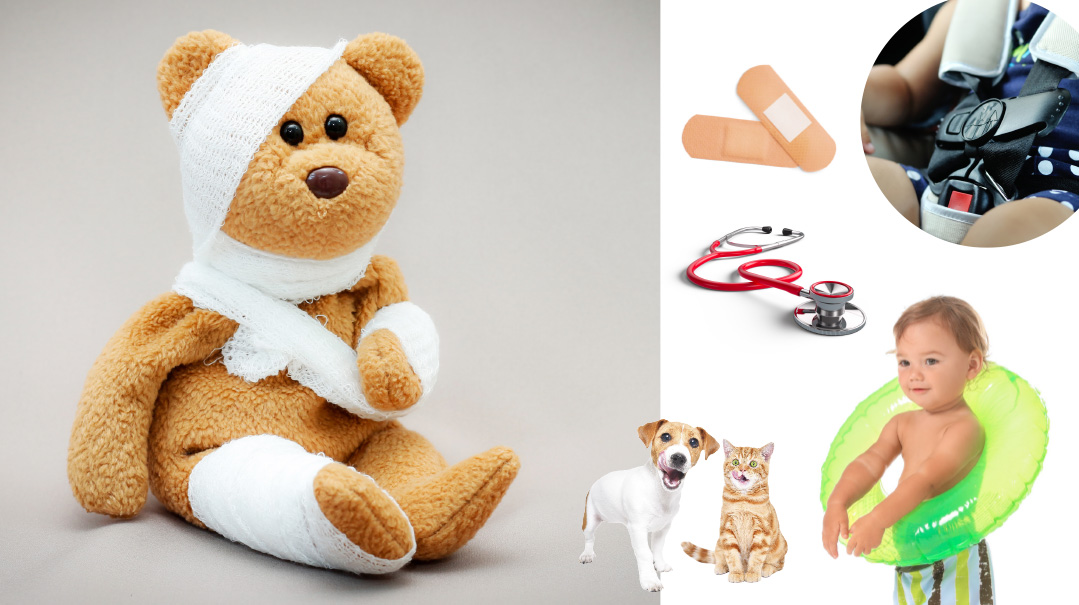Family Living: Eight Things Your ER Doctor Wishes You Knew
| May 20, 2025How to avoid ending up in the ER

Dr. Aaron R., MD, an ER doctor in Chicago, Illinois, shares eight things everyone should know about the Emergency Room — and how to avoid ending up there
Seatbelt Saga
Dr. R. has seen cases where there’s one simple difference between life and death in a terrible accident. Once, two teenage girls were driving recklessly, crashed into a truck, flipped over, and had to be extricated from the car. The unseatbelted passenger suffered from a collapsed lung, fractured foot, and broken vertebrae. The seatbelted driver didn’t have a scratch on her.
We hear so much about seatbelts that it can become annoying. But witness what happens when someone drives without every passenger securely strapped in... and it’s not annoying anymore.
How’s the Head?
Head injuries are some of the most common daily injuries in the ER, mainly among kids.
If your child…
- Lost consciousness
- Is vomiting
- Isn’t acting like they usually do
- Has a bump that isn’t on their forehead
- Fell more than two to three times their height
...head straight to the ER.
Still not sure? Don’t hesitate. This list does not replace a proper medical exam by an experienced provider.
Last month, Dr. R. saw a ten-year-old boy who was accidentally hit with a golf club. Though he seemed fine initially, after a few hours, he became drowsy and slurred his words. A quick CT scan found a skull fracture and internal bleeding.
With the head, it’s always better to play it safe.
Wound Washing
After a severe cut, people often slap on a Band-Aid or bandage, maybe some Neosporin, and rush to the ER. But before the band-aid and the cream, best to wash out the wound with soap and water. The more water pressure, the better, and don’t use alcohol or hydrogen peroxide.
Fabulous Fever?
The medical diagnosis of fever only starts at a 100.4. While 99.9 can suggest a developing fever, it doesn’t meet fever criteria. And Dr. R. has never seen a genuine temperature above 104.
Fever itself is only the symptom of an underlying problem. Some pediatricians won’t even treat fever, because it’s the body’s way of fighting infection. When do high temperatures become scary? With hyperthermia, when the body overheats from an external source, such as when a child is left in a hot car.
Watery Wisdom
It’s a painful truth that drownings increase during the summertime. Every child should know how to swim, pools must be gated, and pool time needs constant supervision.
When I ask if he has any positive experiences to share about reviving a child who almost drowned, Dr. R. shakes his head. “I never saw any happy endings. And that’s why I say — always, always watch your kids around water.”
Being Bit
Most common bites treated at the ER? Bites from cats, dogs, and humans.
Bites from humans and cats almost always get infected. Both have bacteria in their mouths that make us sick. Cat bites or “fight bites” (human bites to the fist from fighting), always get prescribed antibiotics. Dog bites become infected far less often, but still likely require antibiotics.
Even more dangerous are bites from raccoons, skunks, coyotes, or bats, which may contain rabies. There’s no cure for rabies, which is fatal once symptoms start. Only a timely shot can save the victim’s life.
Put Down the Pressure
Patients suffering from high blood pressure often rush to the ER in a panic when their pressure is high. But often, the cause is the symptom.
Someone might have a headache, take their blood pressure, then get nervous when it’s elevated, which causes it to rise further. They take their pressure again, get more anxious, the pressure goes up again, and the medical merry-go-round begins.
The takeaway? Don’t take your blood pressure more than once a day unless your physician tells you otherwise.
Short and Sweet
The main goal of the ER? Ruling out life-threatening illnesses. The waiting process (interminable for your earache, instantaneous for the gunshot victim) and the order of an ER doctor’s questions are designed to determine if your life is in danger.
An insider’s tip to making this process shorter and sweeter for everyone? Keep your answers short and sweet. Try and answer questions as directly as possible. At the end of the interview, add any other relevant information or concerns.
It’s common for, “What brings you in today?” to become, “Two weeks ago, I ate some pineapple. Then, my nose itched, and I got nervous….”
The ER doctor has to sift past the pineapple, wasting precious time. They know the important questions to ask when evaluating for life-threatening illness.
At the end of the day, they don’t want anyone needing the ER.
(Originally featured in Family First, Issue 944)
Oops! We could not locate your form.







